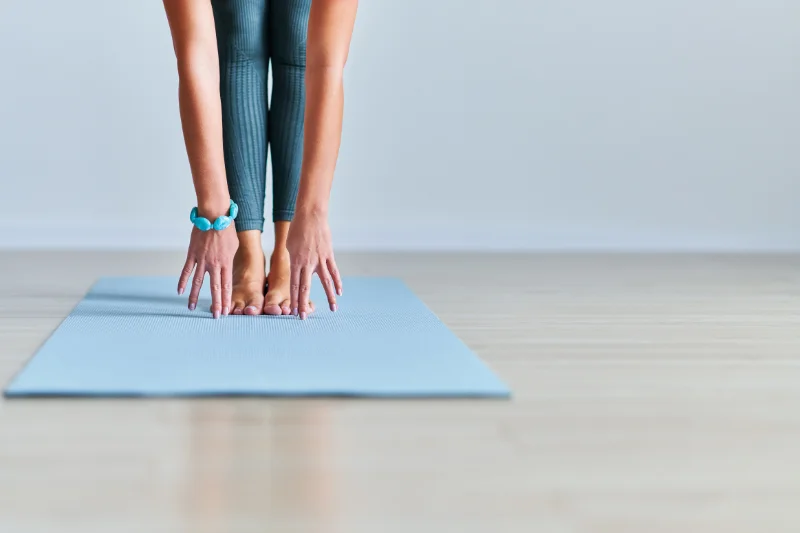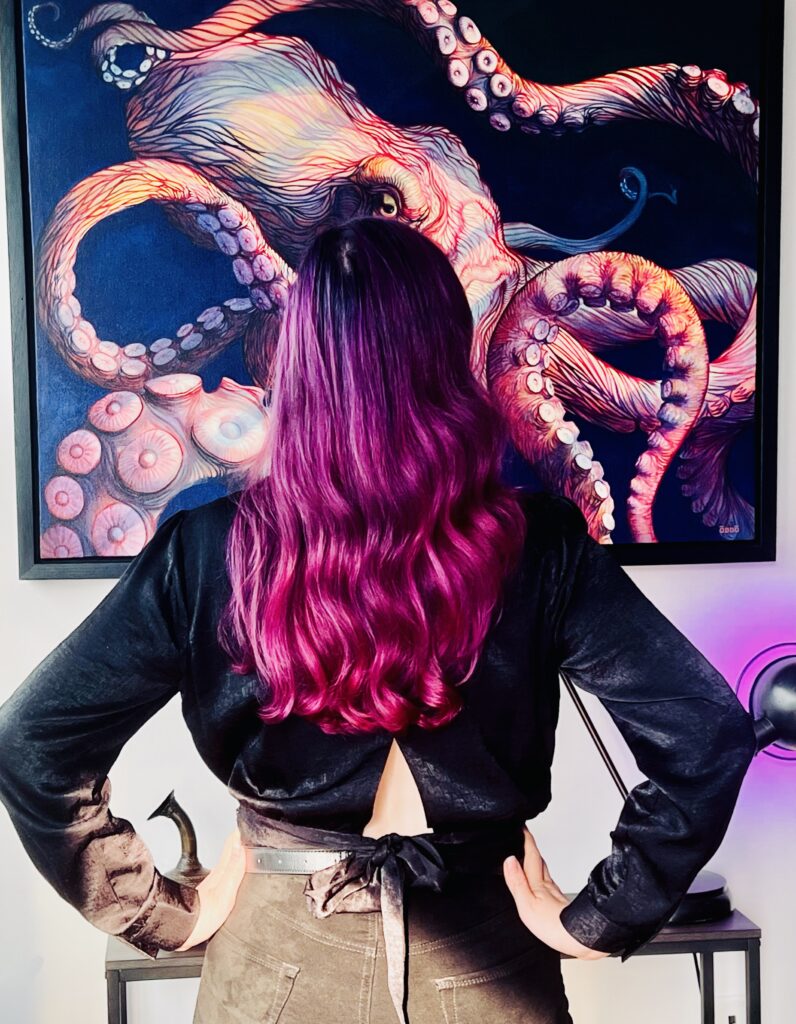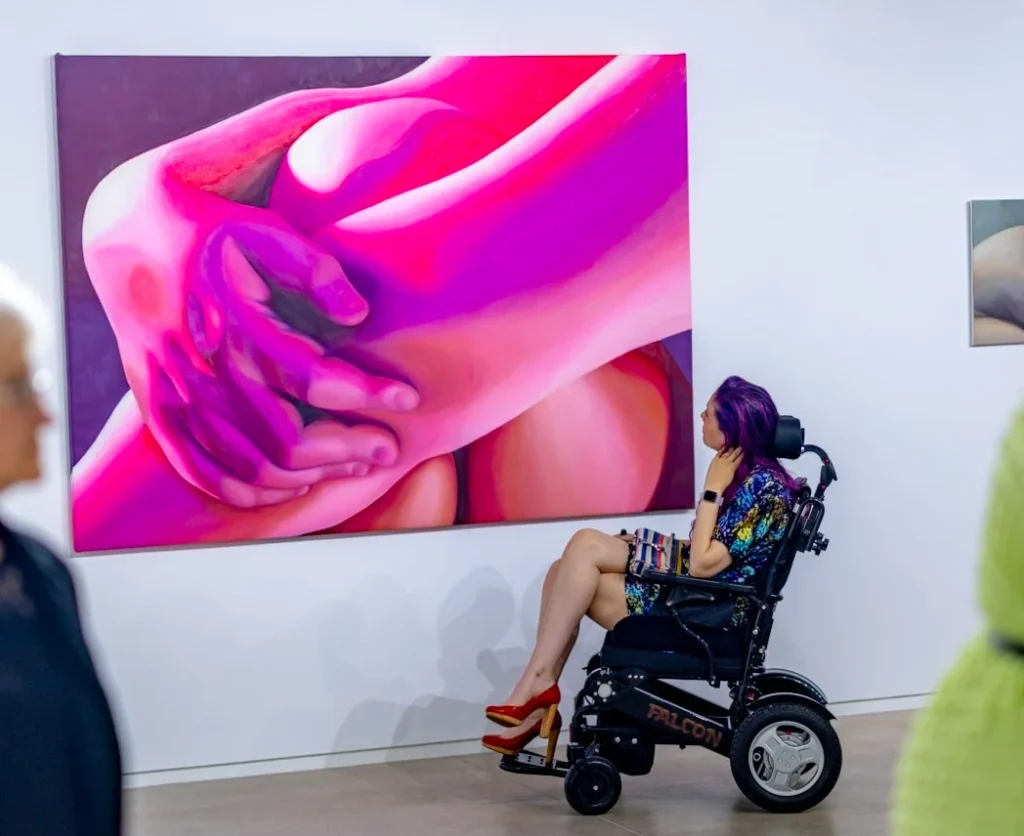
Estimated reading time: 8 minutesHere is a story that beautifully captures what can happen when we stick with a process.
I am so grateful to our Zebra Club member Christy for sharing her journey and honestly expressing her thoughts about joining.
The Zebra Club is a movement therapy app I created for people with Ehlers-Danlos Syndrome (EDS) and hypermobility.
As you’ll read, she thought “this can’t be right” when she first started, and surely she’s not alone in thinking this. The exercises seem so gentle and slow at first – how can they possibly make a difference to my hypermobility pain and improve stability?
I even saw this discussed on Reddit a few years ago, that my approach seems too easy! However, I’ve found that if we don’t start slow and small, we can’t change our movement patterns that recruit the wrong muscles and lead to hyperextension, tension, pain, and injuries.
The body and mind tend to take the path of least resistance, the easy way out, over real engagement of stabilizing muscles. If we don’t slow down and first reprogram the brain’s approach to muscle engagement and patterns, we cannot make fundamental changes.
Take a read and follow what happened when Christy changed her perspective on movement. Years of being told to push through and get stronger hadn’t worked.
Because, as hypermobile bodies, we are very good at unintentionally “cheating”, using the wrong muscles to get things done. When we pause, slow down, and change that process, we start to see a transformation at many levels.
I am full of admiration and gratitude for this story – it shares with us how we can make real change with perseverance and patience.
Life Before The Zebra Club: Living with POTS, EDS, & MCAS
I hit forty years old like it was a brick wall. My body couldn’t ignore the pain anymore. Everything started breaking.
Sometimes I would be in so much pain that my body would start shaking and getting nauseous, like a marathon runner. My body thought cooking dinner and attending an evening event with the kids was the same as running a marathon.
For my fortieth birthday, I gifted myself four days in bed. And it felt GREAT! I finally felt rested, but I knew this wasn’t normal. Actually, I knew my entire life that my body wasn’t normal, but that’s a long story.
Something about this felt different; it felt like a turning point. So, I spent the next three years seeing a plethora of doctors who ran a multitude of tests. After getting a POTS and MCAS diagnosis, I did my own research about my likelihood of having EDS. Then I brought all the information I’d gathered to two different EDS geneticists, who both officially diagnosed me with hEDS.
Before I joined The Zebra Club, I had been working in-person with an EDS and POTS specialized Physical Therapist for two years. So, I was in a good starting place. I’d made progress and “graduated” from their program, but I still had pain and flaring.
Although I felt stronger, I would still walk into a session and list what was hurting that week. Additionally, I was growing increasingly bored with the repetitive exercises and found that whenever I was being observed, I tended to push myself too hard and overdo it, leading to flares and soreness.
When I found The Zebra Club, I assumed I would just use it supplementally and continue working with my therapist. But I fell in love with it almost immediately.

Photo Credit Brandon Arolfo. Artist Credit Paul Oddo
Why Jeannie’s Movement Therapy for EDS and Hypermobility Feels Different
My initial thought was that it was too easy, and I was worried about deconditioning. But I quickly learned that the cues Jeannie gave were helping me make connections that I hadn’t made in two years of working one-on-one with a therapist who did not have EDS themselves.
For instance, while doing the shoulder stability classes, I had a huge lightbulb moment about which muscles I was supposed to engage behind my armpit when I was in an all-fours position.
Over forty years old, and having spent thousands of dollars on physical therapy, I had NO IDEA I was supposed to use those muscles! That was the point when I went “all in” on The Zebra Club and signed up for a lifetime membership.
Doing the Zebra Club classes was very different from how I had exercised in my past. Having grown up doing dance, playing sports, and being an elite high school volleyball player, I’d always had a no-pain-no-gain attitude.
I believed the scientific research when it praised high-intensity interval training and yoga. I was always hurt and exhausted, but I’d been hurt and exhausted my whole life, so I thought that was normal.
I think Jeannie’s method is different from others because she is different from others. Most people who develop exercise programs are exercise people, in other words, super fit and love exercise.
But Jeannie has the same trifecta as me: EDS, POTS, and MCAS. She knows exactly what I’m feeling, and she can explain it in a way that makes sense to me and my body.
It’s the verbal cues that make her method so effective for me. She tells me to slow down when most exercise people would say to push through. She tells me to focus on an area that was just about to start to wobble because she knows from her own experience that it’s likely to happen.
She tells me to stop holding my breath because she was just about to hold hers. No amount of training or university degrees can make up for the fact that she built a movement program based on the foundation of her own body’s experience; that kind of training is priceless.
This is also the first exercise program I’ve done that focuses just as much (if not more) on relaxing muscles as it does on activating muscles.
Until I started doing The Zebra Club shoulder program, I had no idea my shoulders weren’t relaxed onto the ground when I was lying on my back.
The first time I did an arm movement with my shoulders touching the ground, I understood that it felt “right,” and I was shocked that I didn’t know that before.
I finally understood that you can’t engage the correct muscles until you relax the incorrect muscles, and after a lifetime of using the wrong muscles to compensate for defective connective tissue, I had a lot of relaxing to do.
I started TZC in September, and I spent most of winter exercising in pants. When Spring came around, I put on shorts, did a class with some squats, and something caught my eye. When I squatted down, I now had a shadow next to my thigh muscle.
I believe this is called muscle definition. I was so excited by my new shadow that I posted my discovery in the Zebra Club chat room, and we all had a good laugh.
That’s when I stopped worrying about TZC vs. traditional physical therapy. Sure, I was in a lot less pain by that point, but there’s nothing like vanity to finally get through to me.
I came for the exercise, but I stayed for the people.
Prior to The Zebra Club, my experience of online EDS corners had not been very positive. It was mostly filled with negative people.
The Zebra Club was naturally different because it’s inherently filled with people who are serious about getting better. Logically, this made it more positive, but not toxically positive; there is still room for sadness, anger, and frustration.
I had no idea how lonely I was in my EDS journey until I connected with all the fabulous people in The Zebra Club online community. The nature of a rare disease means not having many people around who understand what you’re going through.
All of a sudden, I had access to over three thousand people around the world with EDS. I couldn’t believe it. Not only could I ask practical things, like which K Tape is best, but after a lifetime of pain and doubt, I was suddenly able to connect with people who felt the same way.
It was kind of like growing up adopted and then going to a family reunion of biological relatives, looking around, seeing people like you, and finally feeling a sense of “home”.
Additionally, The Zebra Club is not just movement therapy and wonderful people; it also offers access to resources, expert guest speakers, Ambassadors, and members. From these resources, I discovered several other interventions which have brought me additional relief.
It’s a wealth of information about all things EDS.

Artist Credit Julia Kidd
How has my life improved since The Zebra Club? Two words: Bizarre and Wonderful.
I was very lucky to have access to a great EDS-aware physical therapist whom I worked with one-on-one for two years prior to joining The Zebra Club, and I saw some great improvements, but I was still having pain and flares.
It was still the typical Whack-a-Mole game of pain, but on a smaller scale. Each week, I would come in and list all the things in pain that week, and they would map out a movement plan based on my needs.
The pain list was smaller, but it was still there. It’s the same list I would give my chiropractor and medical massage therapist. All three therapists would leave notes to each other via my phone’s notes app so they could all be aware of the work they were doing. It was a team effort; I called it Team Humpty Dumpty.
Since joining The Zebra Club a year ago, that list of pain has gotten a lot smaller, and lately, sometimes I walk in to see my chiropractor or massage therapist and I don’t have any list at all! It’s a bizarre and wonderful thing.
I used to do the same few TZC classes from the pain management section, because those areas always hurt; in short, to pick a class, I would follow the pain just like my physical therapist used to do.
But lately, when I sit on the mat to pick a class, I feel a little lost because there is no pain to follow. Again, a bizarre and wonderful feeling. These days, I mostly do Moderate and Challenging level classes, and I try to do a cardio class once or twice a week.
One of the more practical improvements has been after dinner. Evenings are hardest for me. It used to be that I would spend an hour or so cooking dinner, eat quickly, and then go lie in bed the rest of the evening because I was so wiped out and in pain from cooking.
But now, I can usually sit at the dining table with my family as long as needed. I still remember the first night we were able to play an after-dinner board game at the dining table instead of awkwardly on my bed.
On the rare occasion I do get a headache these days, I have better tools to deal with it. Prior to TZC, an exercise class was not on my list of headache remedies. But now, it’s one of the first things I try, and it usually helps to some degree. In fact, I have a better attitude in general about exercise.
The Zebra Club classes are the first time in my life that I am enjoying exercise! It blows my mind that I actually look forward to exercising. Sometimes I’ll finish a class and say something like, “Wow, I feel so much better.” And my partner looks at me like I’ve been body swapped – as I said….bizarre and wonderful.
My final thoughts
We currently live in a world where Ehlers-Danlos Syndrome is under-researched.
I can’t do anything about the 30 years of pain I experienced before my diagnosis. But what really makes me sad is that pain colors every memory I have of my children’s early years.
When I see pictures of their birthday parties, I remember how much pain I was in that day because I didn’t know about my condition, and I thought I should do alllllll the things.
It makes me cry when I realize all those beautiful memories are tainted. This could have been prevented if any of the many, many medical professionals I’d seen throughout the years had recognized my symptoms for what they were and shown me the tools my body needs.
Therefore, I’m happy that The Zebra Club has given me a chance to create some awareness via this blog post and through the everyday comments and posts I share with other TZC members.
FAQ
What is The Zebra Club?
The Zebra Club is a movement therapy app created by Jeannie Di Bon for people with Ehlers-Danlos Syndrome (EDS), hypermobility, and related conditions like POTS and MCAS. It offers guided classes, education, and a supportive community designed to help people move safely and build confidence in their bodies.
How is movement therapy different from physical therapy for EDS?
Movement therapy focuses on gentle, mindful, and functional movement patterns to retrain the body’s stability, balance, and coordination. While physical therapy often targets specific injuries, movement therapy—like that in The Zebra Club—addresses the whole body and nervous system to reduce pain and fatigue.
Can people with POTS benefit from The Zebra Club?
Yes. Many members, like Christy, have found The Zebra Club helpful in managing POTS symptoms. The program’s approach allows participants to move at their own pace, support blood flow, and calm the autonomic nervous system through gentle, structured classes, many of which are done lying down.
Do I need a diagnosis of EDS or HSD to join The Zebra Club?
No. Anyone who experiences joint instability, chronic pain, fatigue, or hypermobility can benefit. The classes are designed to be adaptable and supportive for people at all stages of their journey, whether or not they have a formal diagnosis.
Who is Jeannie Di Bon?
Jeannie Di Bon is a movement therapist, author, and educator specializing in hypermobility, Ehlers-Danlos Syndrome, and chronic pain. She created The Zebra Club and the Integral Movement Method (IMM) to help people move safely, improve stability, and live with more ease.


No Comments